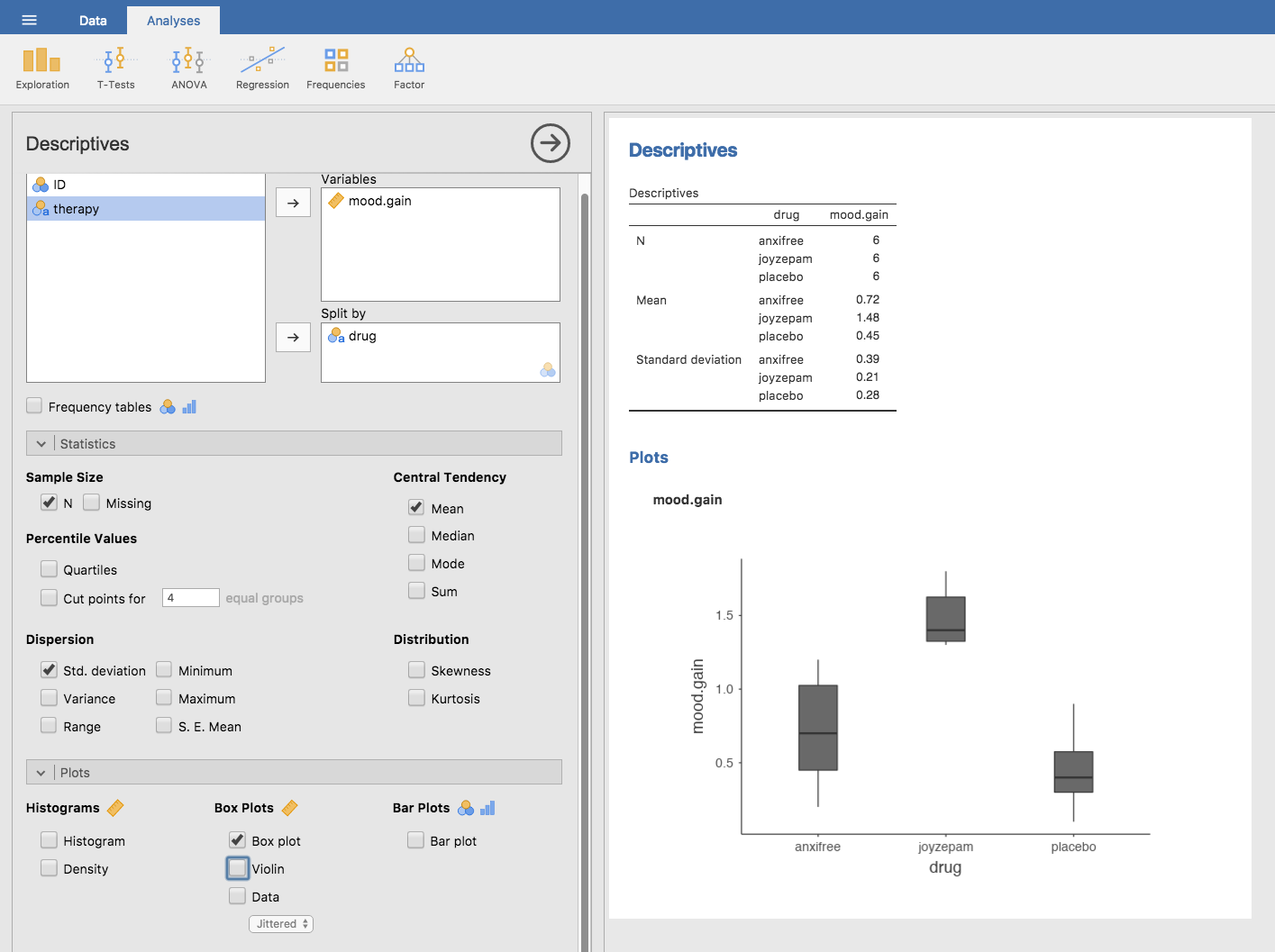Section author: Danielle J. Navarro and David R. Foxcroft
An illustrative data set¶
Suppose you’ve become involved in a clinical trial in which you are
testing a new antidepressant drug called Joyzepam. In order to
construct a fair test of the drug’s effectiveness, the study involves
three separate drugs to be administered. One is a placebo, and the other
is an existing antidepressant / anti-anxiety drug called Anxifree. A
collection of 18 participants with moderate to severe depression are
recruited for your initial testing. Because the drugs are sometimes
administered in conjunction with psychological therapy, your study
includes 9 people undergoing cognitive behavioural therapy (CBT) and 9
who are not. Participants are randomly assigned (doubly blinded, of
course) a treatment, such that there are 3 CBT people and 3 no-therapy
people assigned to each of the 3 drugs. A psychologist assesses the mood
of each person after a 3 month run with each drug, and the overall
improvement in each person’s mood is assessed on a scale ranging from
-5 to +5. With that as the study design, let’s now load clinicaltrial
data set. It contains the three variables drug ,
therapy
and
mood.gain .
For the purposes of this chapter, what we’re really interested in is the
effect of drug on mood.gain. The first thing to do is calculate some
descriptive statistics and draw some graphs. In
Descriptive statistics we showed you how to do this, and some of the
descriptive statistics we can calculate in jamovi are shown in
Fig. 130.

Fig. 130 Descriptives for mood.gain, and box plots by drug administered
As the plot makes clear, there is a larger improvement in mood for participants
in the Joyzepam group than for either the Anxifree group or the
Placebo group. The Anxifree group shows a larger mood gain than the
Placebo group, but the difference isn’t as large. The question that we want
to answer is are these difference “real”, or are they just due to chance?